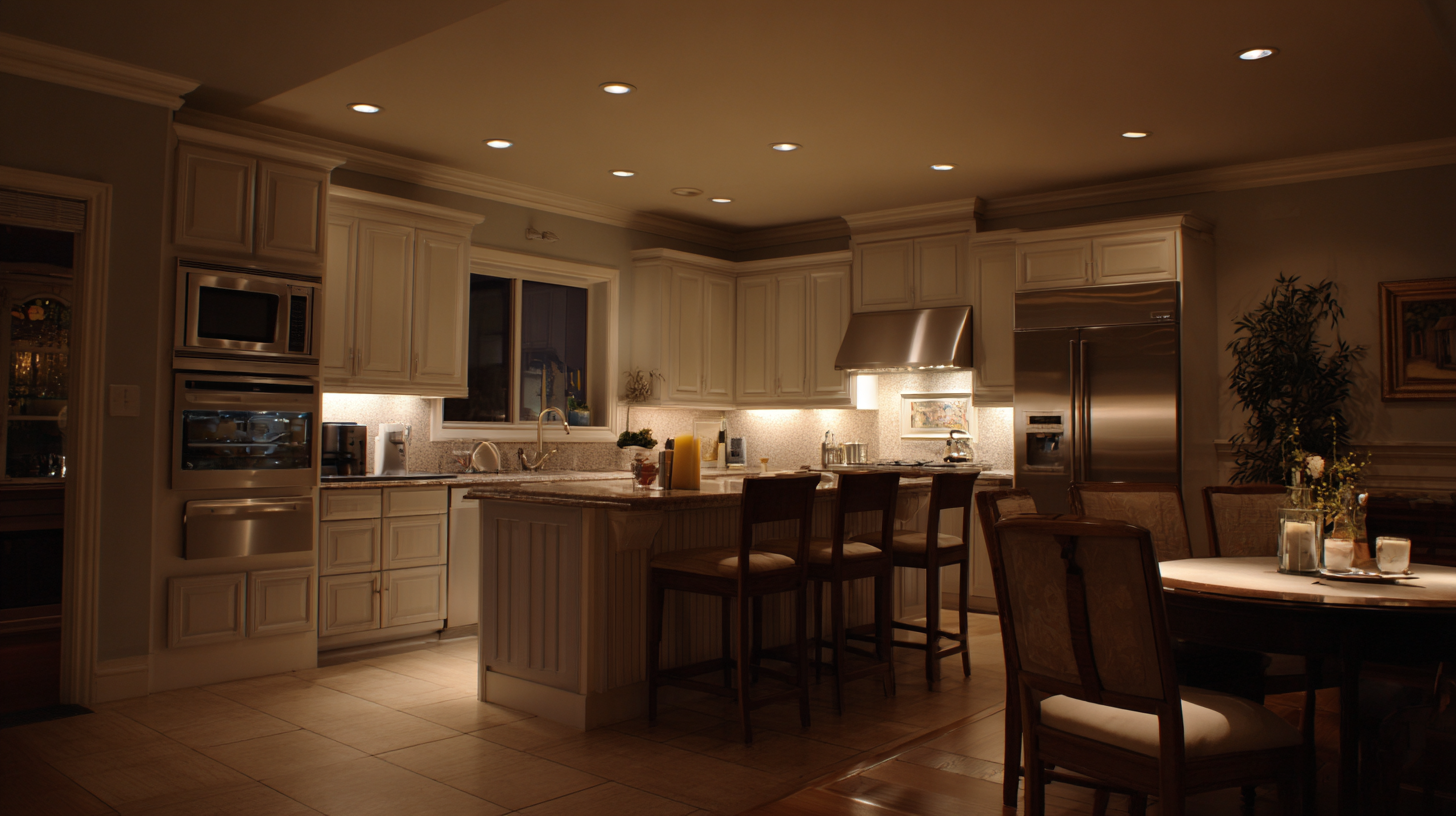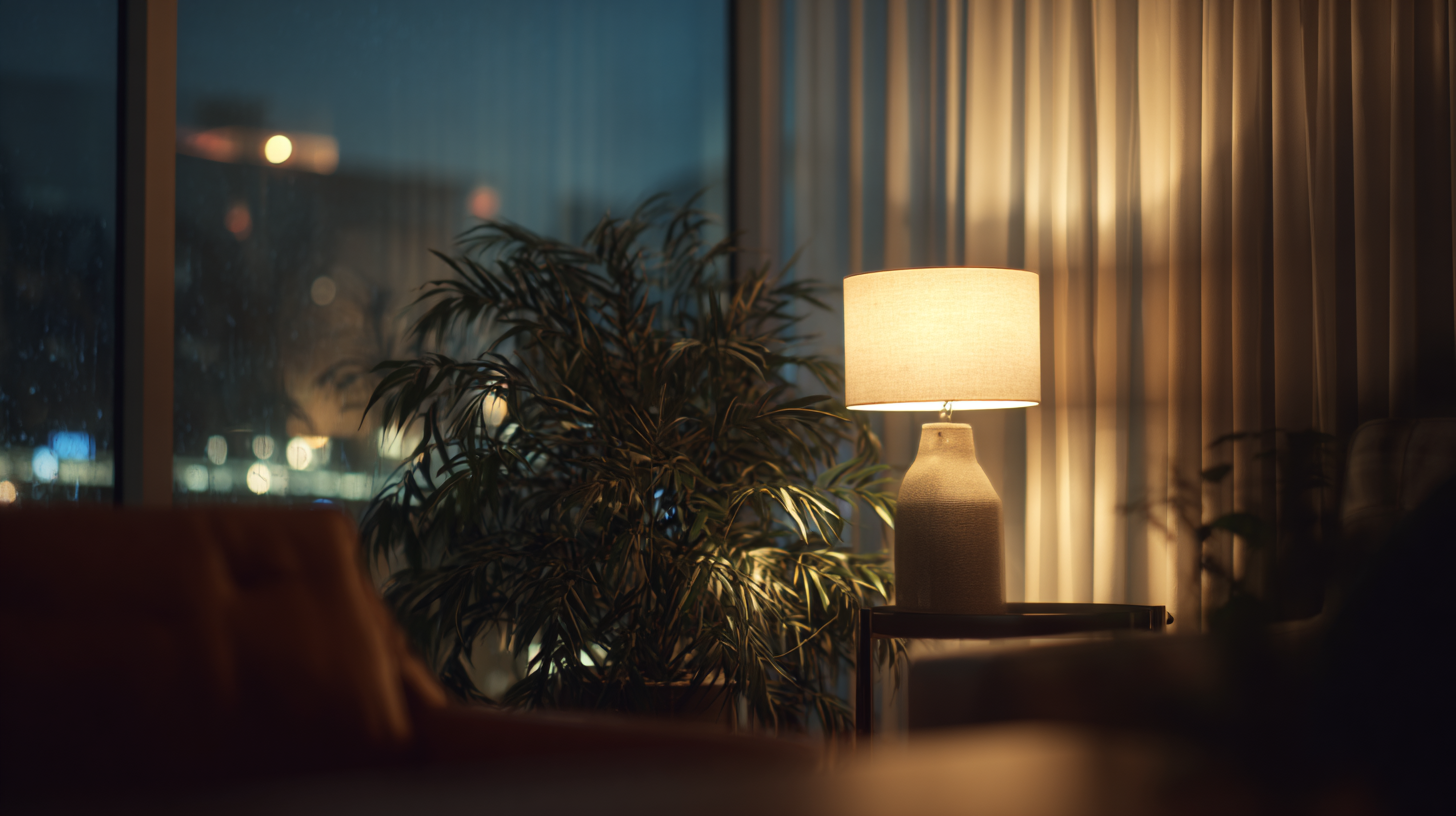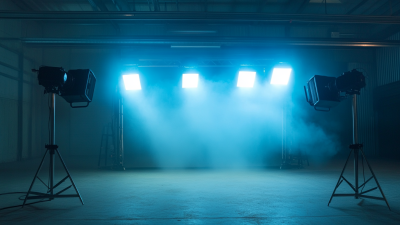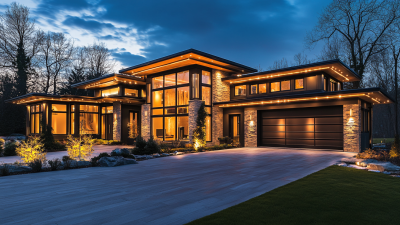How to Optimize Home Lighting for Energy Efficiency Using Smart Technology
In today's energy-conscious world, optimizing home lighting not only enhances the ambiance of our living spaces but also significantly reduces energy consumption. According to the U.S. Department of Energy, lighting accounts for about 15% of a typical household's energy use, highlighting the potential savings that can be achieved through effective lighting strategies.
Smart technology has emerged as a game-changer in the quest for energy efficiency, allowing homeowners to control lighting systems more intuitively and responsively. By integrating smart bulbs, sensors, and automated controls, consumers can reduce their energy expenditure while maintaining optimal illumination.
 With the global market for smart home technology projected to reach $174 billion by 2025, understanding how to effectively implement these innovations for home lighting optimization is not just an eco-friendly choice, but also a financially savvy investment for households looking to lower their bills and carbon footprint.
With the global market for smart home technology projected to reach $174 billion by 2025, understanding how to effectively implement these innovations for home lighting optimization is not just an eco-friendly choice, but also a financially savvy investment for households looking to lower their bills and carbon footprint.
Understanding Energy Consumption in Home Lighting Systems
Understanding energy consumption in home lighting systems is crucial for optimizing energy efficiency. Traditional incandescent bulbs not only consume more electricity but also generate significant heat, leading to higher energy bills. In contrast, energy-efficient alternatives such as LED and CFL bulbs use approximately 75-80% less energy, significantly reducing overall consumption while providing similar, if not better, light output. By switching to these technologies, homeowners can experience both financial savings and a lesser environmental impact.
Smart technology plays a pivotal role in managing energy usage effectively. Smart lighting systems allow users to control brightness levels, set schedules, and even automate lighting based on occupancy. This means lights can be turned off automatically when a room is unoccupied, and brightness can be adjusted based on natural light availability. Additionally, many smart systems monitor energy consumption in real-time, providing valuable insights into usage patterns. By utilizing these technologies, homeowners can not only enhance their comfort but also significantly cut down on energy waste, resulting in a more sustainable living environment.
Integrating Smart Bulbs for Enhanced Control and Efficiency
Integrating smart bulbs into home lighting systems can significantly enhance energy efficiency while providing users with greater control over their environment. According to a report by the U.S. Department of Energy, LED bulbs, which are commonly used in smart lighting systems, consume up to 75% less energy than traditional incandescent bulbs and last up to 25 times longer. This dramatic reduction in energy consumption not only lowers electricity bills but also minimizes household carbon footprints, contributing to a more sustainable lifestyle.

Smart bulbs equipped with wireless connectivity allow homeowners to adjust lighting remotely through apps or voice commands. This flexibility enables users to optimize their lighting based on activity or mood, further enhancing energy savings. A recent study from the Lawrence Berkeley National Laboratory indicates that utilizing smart lighting systems can reduce energy use by up to 40% in residential settings. By incorporating features such as scheduling and dimming, smart bulbs can automatically adjust to the time of day or occupancy, ensuring that lights are only on when needed. Integrating this technology not only promotes efficiency but also creates a more personalized living space.
Utilizing Smart Sensors for Automated Lighting Management
Smart sensors are revolutionizing home lighting management by ensuring energy efficiency while enhancing convenience. These sensors can automatically adjust the brightness based on the presence of individuals in a room or the time of day. For instance, motion sensors can turn lights on when someone enters a space and off when they leave, minimizing energy waste.
**Tip 1:** Install motion sensors in low-traffic areas like hallways or garages to prevent lights from staying on unnecessarily. This small change can lead to significant energy savings over time.
Moreover, using smart sensors allows homeowners to customize their lighting preferences effortlessly. By integrating systems that respond to natural light levels, smart sensors can dim or brighten indoor lighting to match outside conditions, creating a more comfortable environment.
**Tip 2:** Consider utilizing daylight sensors to maximize natural light usage. Position these sensors strategically near windows to optimize artificial lighting only when needed.
By implementing smart sensors, homeowners can not only reduce their carbon footprint but also enjoy a seamlessly adjustable lighting experience. These technologies pave the way toward sustainable living without compromising on comfort.

Creating Personalized Lighting Schedules with Smart Technology
Creating personalized lighting schedules using smart technology can significantly enhance energy efficiency in homes. According to a report by the U.S. Department of Energy, smart lighting controls can reduce energy consumption by up to 30%. By utilizing smart bulbs and switches, homeowners can automate their lighting systems to align with their daily routines. For instance, a personalized schedule might involve dimming lights during the day when natural sunlight is abundant and brightening them in the evening as the sun sets.
Furthermore, studies have shown that homes with automated lighting schedules can achieve better energy savings compared to traditional lighting setups. The Energy Information Administration (EIA) reports that residential lighting accounts for roughly 12% of total energy use, emphasizing the importance of optimizing this aspect. Smart technology allows users to program their lights to turn off automatically in unoccupied rooms or adjust based on occupancy detection, maximizing energy efficiency while providing the convenience of tailored ambiance. Embracing these solutions not only contributes to lower energy bills but also supports a more sustainable lifestyle.
Energy Consumption by Lighting Type
This chart illustrates the average monthly energy consumption in kilowatt-hours (kWh) for different lighting types. As seen, LED and smart lights are more energy-efficient compared to traditional incandescent and halogen bulbs, allowing for optimized home lighting using smart technology.
Exploring Energy Monitoring Apps for Home Lighting Optimization
Energy monitoring apps can be game-changers in optimizing home lighting for energy efficiency. These applications allow homeowners to track their energy consumption in real-time, identify patterns, and make informed decisions about their lighting usage. By connecting smart lighting systems with energy monitoring apps, users can seamlessly manage their home’s illumination and minimize unnecessary energy expenses.
Tips for Using Energy Monitoring Apps:
- Start by installing a user-friendly energy monitoring app that integrates smoothly with your smart lighting system. Look for features like usage reports and alerts for unusual spikes in consumption.
- Take advantage of scheduling features to automate lighting based on your daily routines. For instance, set your lights to turn off during the day when natural sunlight is abundant.
- Regularly review your energy consumption data to identify which lights consume the most energy. Consider switching to LED bulbs or dimmable options to lower usage without sacrificing brightness.
Optimizing home lighting through technology can lead to significant energy savings while enhancing the comfort of your living environment. Embracing these tools ensures that every bit of energy is used efficiently.
Related Posts
-

Challenges Faced by Global Buyers in Securing Quality Lighting Products
-

Transforming Spaces: Innovative Applications of House Lighting in Modern Architecture
-

The Evolution of House Lighting for a Brighter Tomorrow
-

Maximizing Efficiency Through Enhanced Lighting Lumens in Diverse Industrial Applications
-

What Are the Key Trends Shaping the Future of Home Lighting Solutions
-

Exploring Unique Features of Home Lighting Solutions and How to Choose the Right Fit for Your Needs
 Skip to content
Skip to content